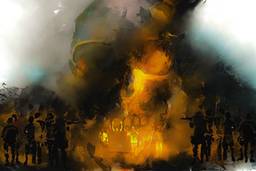Downton Abbey, Season 4, Episode 1.5: The 10 Most Boring Characters
Let’s drop the pretense. Does anyone really care about Rose?
Jude Ellison Sady Doyle

And, we’re back! Let this be a warning against the dangers of binge-watching: Having previously observed my sacred holiday tradition of watching most of the BBC episodes of Downton Abbey in one long rush, after watching the first hour of the premiere, I was so overwhelmed by its eventfulness and superfluity of plot lines that I honestly believed I had watched both hours. My job is to watch TV, not to know how clocks work, (although, to be fair, I clearly failed at both). Therefore, we are back to review the second hour in Downton Premiere: Part Deux or, as I like to call it, Downton Premiere: The Boring Characters. For in fact – and to my pleasant surprise – the second part of Downton’s premiere is largely comprised of elaborating on the plot lines and characters I did not bother to recap in the first. This gives us a nice opportunity to catch up with their activities in both hours. The downside is that they happen to be the very most boring people in Downton. Here they are, ranked conveniently in order from least to most boring.
Boring Character #10: Carson
Let us be honest with each other: Carson is not all that boring. Carson is an interesting and worthwhile human being. Carson is a man with a shameful vaudevillian past, a stentorian and dignified manner, and a talent for giving Lady Mary stern-yet-loving pep talks that speak to the unresolved paternal issues within us all. In the two parts of this premiere alone, we get Carson intoning phrases such as “You are letting yourself be defeated, my lady,” and, “You have a good cry, that’s what’s needed now,” and “You. Are. Strong enough,” all of which deserve to be adapted into a motivational audiobook entitled Carson The Butler Is On Your Side.
That said, I honestly cannot find it within myself to be deeply troubled about why Carson is still single, and that’s what Carson is deeply troubled about in the premiere. His former vaudeville partner, Mr. Grigg, has reached out to him from the workhouse, and Carson is ice-cold on the matter of his refusal to get involved in this man’s terrible life. (His coldness leads to what is perhaps the most hilarious line ever spoken on Downton Abbey, from Mrs. Hughes: “This is a man you sang and danced with! Do you feel nothing?” Turning on your former Show Choir members is a grave offense, this is true.)
Yet, like all cruelty, Carson’s stems from pain: Carson and Grigg were once in love with the same woman, and that woman chose Grigg over Carson. This has caused a deep and bitter rift between the two men. Yet at last, when Carson allows himself to meet with Grigg, the truth emerges: Their relationship was a disaster, and ended quickly, and now the woman in question is dead, having repented fully of not dating the butler. “Carson was the better man. I could have loved him. I did love him, really. But I was a fool, and couldn’t see it,” she is quoted as saying. And so, having received his own version of a Carson Pep Talk, Carson goes back to the Abbey, his ancient heartbreak assuaged. To be fair: If you had a chance to date Carson, and didn’t take it, you’d probably repent, too. Even worse, when you repented, there wouldn’t be anyone there to tell you how much you deserved to have a good cry.
Boring Character #9: Branson
Matthew reaches out with a letter from beyond the grave with a letter specifying that he wishes Lady Mary to inherit and run the entire estate. Lord Grantham is still being a sexist baby about Lady Mary running half of the estate. Branson is going to teach Lady Mary how to run the estate. Next!
Boring Character #8: Rose the Sexy Jazz-Loving Cousin
In case anyone here is an aspiring screenwriter, allow me to offer you some tips: If you are writing a story for a character named “Rose,” in a series that prominently featured the sinking of the Titanic, it is generally worthwhile to double-check your script to ensure that you are not actually copying the precise experiences of Kate Winslet’s character, “Rose,” in the 1998 movie Titanic.
And yet, alas, this episode was clearly written before I had the chance to dispense this game-changing wisdom. For here is what happens: Rose is stifled by the constraints of her upper-class lifestyle (like Rose from Titanic), and Rose wishes to escape and have bohemian fun (like Rose from Titanic), and Rose therefore secretly sneaks out to a rowdy dance populated by working-class types (just like Rose from Titanic), where she dances with a sexy working-class fellow for whom she develops romantic feelings (wait a minute, I think I might actually be watching Titanic).
Unfortunately, this Rose’s sexy working-class fellow, whose name is Sam, gets into a fist-fight, requiring Rose and her chaperone Anna to run away from the dance for fear of being arrested along with the fist-fight’s participants. When Sam tracks Rose down to the Abbey — where, she claimed, she was an aspiring lady’s maid — she puts on a maid’s uniform to converse with him, and pretends to have a farmer boyfriend, so as to let him down easy. Then Rose gives Sam a long, intense kiss, complete with sloppy spit-string aftermath, which might actually be letting him down too easy. Still, he seems satisfied. I can’t wait for next week’s episode, in which long-lost Cousin Billy Zane visits the Abbey to give Rose a legendary heart-shaped diamond. What will she do with it? She couldn’t just chuck it off the side of a boat, right? Suspense!
Boring Characters #7-3: Daisy and The Kitchen Maid That Looks Exactly Like Daisy and The Tall Good-Looking Blond Manservant and The Shorter Good-Looking Blond Manservant
All of these people are in love with each other somehow — as far as I can tell, Daisy likes the tall manservant, both manservants like the kitchen maid who looks exactly like Daisy, and none of them are bothering to wear name tags, which means that none of them like TV recappers — and the manservants are fighting about it. One of the blond manservants takes the kitchen maid that looks like Daisy on a date, and she gets drunk. This is what they’re fighting about. Also Valentine’s Day cards. Will these frighteningly interchangeable people find love? Will I be able to figure out who winds up with whom, if so? The answers are “maybe” and “probably not.” I apologize.
Boring Character #2: Mrs. Crawley
Her son is dead. She’s sad about that, I guess. Also she gets Carson’s friend a job. The end.
Boring Character #1: Bates
Let me be honest, dear reader: I personally consider Bates to be the most boring and unlikable character on Downton Abbey. His introduction in the first season was fine; he needed to walk with a cane, and was therefore unemployable by all but his old war buddy, Lord Grantham. This provided several core cast members with the opportunity to be memorably terrible people on the disability front. However, once all the characters got used to the abomination that was “working with a man who walked somewhat slowly,” the Bates portion of the show subsided into a bizarre, misogynistic, drawn-out plotline about Bates’ first marriage that seemed to speak less to social issues than to the ever-more-plausible hypothesis that one of the male writers on Downton Abbey had been through an acrimonious divorce recently and needed to process his feelings. To recap: Bates loved Anna; Anna loved Bates; despite loving Anna, Bates was secretly a) a recovering alcoholic, b) a convict and c) married to a woman who hated him so much that she killed herself with rat poison so as to frame Bates for her murder and thereby prevent him from ever again knowing a woman’s carnal embrace. She also tried to get Bates to punch her, so that she could frame him for domestic abuse. It was long, it was unpleasant, it relied upon horrifically sexist stereotypes about women who report abuse, and by the end, “Bates” came to be synonymous (in this recapper’s mind) with “immediate fast-forward.”
Yet here we are, with a free and happy and sexually active Bates, and the question of how he could possibly get less interesting. The answer: Involve Bates in the ongoing parade of failure, despair and humiliation known as Joseph Molesley.
Molesley, you see, is out of a job, due to his previous employer Matthew having fatally rammed his car into a tree. He is living with his father, he is broke, and his attempts to get a new job are sabotaged by his prospective co-worker, who believes Molesley is after his job, and therefore goes to great lengths to make Molesley trip on people and drop things and embarrass himself. Thus humiliated, Molesley eventually takes a vaguely defined but nonetheless unpleasant job that requires him to be covered in dirt and wielding a shovel — presumably still broke, presumably still living with his parents, but now also muddy — and Bates wishes to rescue him. This means several scenes’ worth of Bates bothering other characters, acting ominous and forging signatures, before finally revealing his dastardly master plan: Pretending he owed Molesley 30 pounds (around $7,400 in present-day American money) and giving it to him. Molesley insists that Bates does not owe him any money; Bates shows Molesley his own forged signature, “proving” that he does; a careful viewer can actually see Molesley lose his fragile grip on sanity, as his already-intolerable reality is disintegrated by gaslighting.
But at least he has seven grand to spend on therapy now. Hurrah for Bates! And hurrah for the eternal truth about Bates: Even when he is saving people from the poorhouse, he manages to do so in a way that makes him seem creepy, ambiguously violent, and – somehow – deeply uninteresting as a person. At any rate, if we find Molesley face-down in a pile of rat poison in the near future, I do believe we’ll all know who to blame.
Jude Ellison Sady Doyle is an In These Times contributing writer. They are the author of Trainwreck: The Women We Love to Hate, Mock, and Fear… and Why (Melville House, 2016) and was the founder of the blog Tiger Beatdown. You can follow them on Twitter at @sadydoyle.








